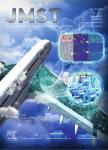Analysis of the Transformation-induced Plasticity Effect during the Dynamic Deformation of High-manganese Steel
Analysis of the Transformation-induced Plasticity Effect during the Dynamic Deformation of High-manganese Steel作者机构:School of Materials Science and EngineeringUniversity of Science and Technology Beijing
出 版 物:《Journal of Materials Science & Technology》 (材料科学技术(英文版))
年 卷 期:2015年第31卷第2期
页 面:191-198页
核心收录:
学科分类:08[工学] 080502[工学-材料学] 0805[工学-材料科学与工程(可授工学、理学学位)]
基 金:financially supported by the National Natural Science Foundation of China (No.51271028)
主 题:High-manganese steel Martensitic transformation Ad
摘 要:The transformation-induced plasticity(TRIP) effect and resistance characteristics to adiabatic shear failure at high strain rates of high-manganese steel were investigated by using scanning electron microscopy and electron backscattering diffraction. Results showed that the high-manganese steel exhibited excellent strain hardening effect and resistance to adiabatic shear failure because of the TRIP effect. The TRIP effect occurred during dynamic deformation and showed two distinct stages,namely,the smooth TRIP process before the formation of adiabatic shear band(ASB) and the inhibited TRIP process during further deformation. In the first stage,the martensitic transformation showed slight orientation dependence and weak variant selection,which promoted the TRIP effect. In the second stage,reverse martensitic transformation occurred. Adiabatic shear bands(ASBs) developed typical shear microtextures {111}. In microtextures,two groups of fine grains are in a twin relationship and uniform distribution,which restrained the formation of holes and cracks within the ASBs and enhanced damage resistance after ASB formation.



